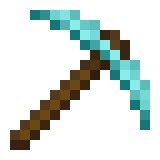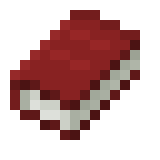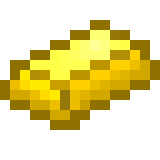Reviewer: John BDeveloped By: GUILD STUDIO, IncPublished By: Square EnixCategory: Board Game, Strategy, Multiplayer, Platformer
Release Date: 6.10.19Price (At Time of Review): $19.99
Buy The Last Remnant Remastered from the Nintendo Switch eShop here.
At the time Last Remnant first came out for the X-Box 360, I was pretty squarely a Sony fanboy. I mean, I had a 360 (and still do), but the PS3 was my main system. Moreover, a Square Enix release on a Microsoft system? Blasphemy, for which I will not stand! That’s all a long way of saying I never played The Last Remnant during its original release. As the years rolled on my old grudges faded and I eventually picked up (and never played) a copy of the game for the 360. Enter The Last Remnant Remastered for the Nintendo Switch; a perfect excuse to play a game I was kinda-sorta going to play anyway, possibly, but also get a review written out of it because I can convince myself I was doing it to help the team at the site. This isn’t me selfishly playing a video game I’ve had on the backlist for far too long; no, no, no. This is a sacrifice I have made for the fine folks of JP’s Switchmania. I’m actually kind of a hero, if you think about it.

Rushing into Danger
The Last Remnant is the story of Rush Sykes and his trials to reunite his family against the backdrop of a continent-spanning war. As the game opens, Rush is helpless to stop a mysterious organization from kidnapping his sister, Irina, while his parents are away conducting research on powerful, ancient artifacts called Remnants for the academy which employs them. He travels to the main continent in search of her captors, only to become embroiled in the political intrigue surrounding the city-state of Athlum and its ruler, David Nassau. Events spiral out of control as the powers-that-be vie for control of their cities and Remnants against an aggressive new threat called the Conqueror, and Rush slowly learns that the continent’s problems and his own aren’t as separate as they first appeared.
“Slowly” is the key word in that last sentence; Rush is a rather dim bulb of a protagonist. He’s fairly oblivious to things like manners, subtlety, or self-restraint, and seems slow to catch on to plot twists that I saw coming a mile away. It was hard to root for him in the beginning of the game as he came off as a little coarse, kinda dumb, and outright rude, but darned if his earnestness and determination didn’t win me over after a few hours. All he really wants is for his family to be safe and whole again, and it’s pretty hard not to relate to that.

Basics of Battle
The Last Remnant’s combat system is an interesting mixed bag of good ideas and spotty execution. When everything works the way you want it to, the system is fantastic, but a few random elements ruin the promise of a strong, strategic combat mechanic. When you’re in a dungeon, combat can be initiated by using an aggression button; trying to initiate combat out of range of your aggression radius results in enemies being alerted and attacking. If an enemy initiates battle, they gain the initiative and attack first. You can eventually slow time with the Timeshift ability to grab many enemies into one battle, which increases the spoils you receive at the end of battle.
The biggest problem with this system is the enemies’ touch radius to gain initiative; I was frequently like ten feet away from an enemy when combat was initiated before I could hit the button to start the fight myself. This isn’t the biggest problem in the world, but being surprised like that resets your chain counter; having a higher chain counter increases your chances of getting rare drops from defeating monsters. It’s a little annoying if you’re farming items, but mostly I didn’t mind.

Combat in The Last Remnant is conducted by dividing your characters into squads called Unions; the HP and AP of every character is pooled together to form the Union’s stats. You give general orders to every union as a group – including physical attacks/techniques, mystic attacks, healing, or occasionally a special ability. For special techniques or magic, characters draw on the Union’s AP pool; if you don’t have enough AP for every member of the Union to use a special attack, they default to a regular attack or just stand by, depending on the Union’s orders. Unions can adopt different formations which alter their strengths and weaknesses in battle. The number of Unions you can field increases as the story progresses, which was kind of a bummer; I wish it had been based on the progression of your main character rather than the story. It would have been a more concrete and rewarding outcome for character progression than the simple stat increases the game uses instead. We’ll get back to the character progression in a minute, let’s finish combat first.
The biggest problem with the combat – and the biggest problem with the game overall – is that you only have minimal control over how orders appear in your order queue. The game generates a list of up to five orders to give to your Unions every turn. Supposedly the list is generated according to the situation of the Union, but sometimes when I desperately needed to heal, no healing options appeared on the list despite my characters possessing those skills and more than enough AP to use them. It was kind of weird. You can disable certain abilities in the menu so they don’t appear as an option during battle, increasing the chances of the abilities you want to use appearing, but ultimately your options are determined somewhat randomly by the computer. The ability to micromanage your commands a little more would have transformed the game’s combat from a fun but sometimes frustrating experience to a deeper, satisfyingly strategic one.

Advanced Tactics
While the command options are somewhat random, they aren’t the only tactical considerations you need to make. Your enemies are divided into their own Unions, too, and while you can’t move your units around the battlefield freely, their placement on the field makes a difference. Unions are deadlocked with the first enemy they attack; if a Union attacks a deadlocked unit, the second Union flanks the deadlocked unit for extra damage. If a Union attacks an enemy unit that is trying to target a different Union, it triggers an Interference attack, which doesn’t directly affect damage, it just raises the morale meter.
The morale meter is a double-edged sword that you will need to manipulate to your advantage. It changes in response to the flow of battle; doing things like launching interference attacks, flanking enemies, or defeating enemy Unions causes it to turn towards you. But the same is true for your opponents. Higher morale leads to your units being able to deal greater damage and having a higher defense; lower morale does the opposite.
Critical hits can be triggered randomly; they require the player to hit the prompted button to succeed, but you can set it to automatically resolve in the options menu, which is what I ended up doing after a few hours. You don’t just have to hit the button, you have to hit it when the icon on the screen is highlighted. The problem with that is that all four possible buttons appear on screen at the same time, and it is difficult to tell what button to push until the last possible second. The auto-resolve option doesn’t guarantee success, but it’s less frustrating than guessing wrong and hitting the incorrect button. Finally, and this is a super-minor part of the game, but like in a lot of strategy RPGs, sometimes guests that you cannot control join your army. The guests in The Last Remnant are as dumb as guests in any other game. GO AFTER THE HEALERS FIRST, YOU IDIOTS!

To BR or Not to BR?
The Last Remnant does not use a traditionally-structured leveling system like a lot of RPGs. Your characters’ stats grow individually, like in Final Fantasy II (the original one for the NES, not the American FFII which is actually FFIV for the SNES). After each battle, you receive notifications of which characters have grown stronger in what areas. I haven’t been able to determine what causes stats to grow; I think maybe they just get a little stronger every battle, until they accumulate enough points to level up. I’m sure there’s a wiki or GameFAQs for it that can explain it but I’m not that worried about it; I found myself grinding for items every once in a while, and the character grinding that happened as a side effect of that kept me competitive with all of the enemies I encountered during the game, bosses included.
The total accumulation of your stats determines your Battle Rank, which is kind of an indicator of how strong you are overall, a lot like how character levels indicate their relative power in a more traditional RPG. The game indicated that enemies would scale to your BR, but honestly I didn’t really see any increase in enemy power as my Battle Rank rose. I didn’t really see much difference in battle rewards or stat progression, either. It’s not like I needed (or even wanted) enemies to be tougher when I was grinding for items, but its purpose feels nebulous outside of the general video game tenet that making numbers go higher is a reward in itself.

Well-Equipped
Characters can equip a weapon in each hand and up to two accessories. Rush is the only character you can directly equip; other characters may request a weapon or accessory you have in your inventory, but you can’t force them to change equipment. You can upgrade and craft new weapons in the world’s various towns with spoils from battle or components gained from mining resource points with Mr. Diggs, a mole-like creature that… likes to dig? He just sort of shows up in a side quest and follows you around for the rest of the game. Digging with Mr. Diggs raises his excavation stats and unlocks new abilities, which increase the quality and number of items you receive when mining resource points.

World Travelers
Navigating the world map is pretty simple; you select icons on the map which represent different destinations like dungeons or towns. City maps operate the same way, except with a view of the city instead of a map of the continent. Cities have different districts which contain different shops and a variety of NPCs. Talking to NPCs in cities (especially in pubs) opens up new quests and side quests which have rewards of varying value, ranging from money to unique characters to hire for your army. While some characters will join your party during the story, the main way to recruit new soldiers is through the Guilds. You pay their hiring price and they are available to be assigned to a Union whenever you’d like. Guilds also offer rewards for completing challenges; for example, killing a unique monster or crafting a certain kind of rare weapon.

Remnants of the Previous Generation
Graphically, The Last Remnant Remastered is perfectly presentable, but its age does show despite the remastered graphics. While the graphical resolution is increased, the character models don’t compare to the fluidity we see in the current generation of AAA games. Don’t let that make you think that the game’s design isn’t fantastic, however; the armor, weapon, and setting designs are original and just plain cool. The design of the different races inhabiting The Last Remnant’s world are diverse and cool, from the frog-rabbit Qsiti to the four-armed cat people called the Sovani to the giant fishmen the Yama. So, yeah, the graphics are kind of dated-looking, but the fantastic and original designs underneath more than make up for that.
The music is likewise exceptional; a mix of orchestral tracks and hard rock guitar riffs that always seem to match the mood of the scene. The battle themes are particularly cool, not just because they’re cool songs, but because the music changes based on how the battle is going. At the start of a new turn, if you have a lot of Unions low on health and the morale meter is against you, the battle theme changes to a more desperate-sounding rock track. It’s a pretty cool way to add drama to the combat, and an example of a great, small detail that shows how much care really went into making this game. The voice acting is fairly well-done; only the main story sequences get voiceover, however. Most side quests are text-only, which dulls the game down a little.

The Last Word
I wish I hadn’t waited so long to play The Last Remnant. Not only is it a game worthy of the Square Enix brand (BTW, Squenix is my favorite dev), it’s just a good game on its own. It features a good story about family, sacrifice, and the cost of power. The game’s art direction is fantastic, even if its execution is somewhat limited by last generation’s technology. The battle system is interesting and engaging, but sometimes frustrating in its lack of specific control options. I guess I would have preferred a little more transparency about the character progression system, too, but it’s not like a lack of that knowledge had a huge impact on my enjoyment of the game. We should all be glad Square Enix has committed to bringing its back catalogue of games into the present, and The Last Remnant Remastered is a perfect example of why.
Score: 8.75/10
Buy The Last Remnant Remastered from the Nintendo Switch eShop here.
Follow Square Enix
*Review Code Provided by Square Enix
Categories
Recent Posts
Tags
#Broforce #dev #DRIVE #FE #indie #indies #Kickstarter #kickstarter #Minit #nindies #Nindies #Nintendo #NintendoSwitch #Owlboy #RaceDieRun #Switch #SwitchCommunity #switchcorps #SwitchCorps #SwitchCorps #Switchiversary #SwitchLewd #SwitchLewds #Switchruary #Twitch #videogames #VitaIsland #YouTube




Leave a Reply